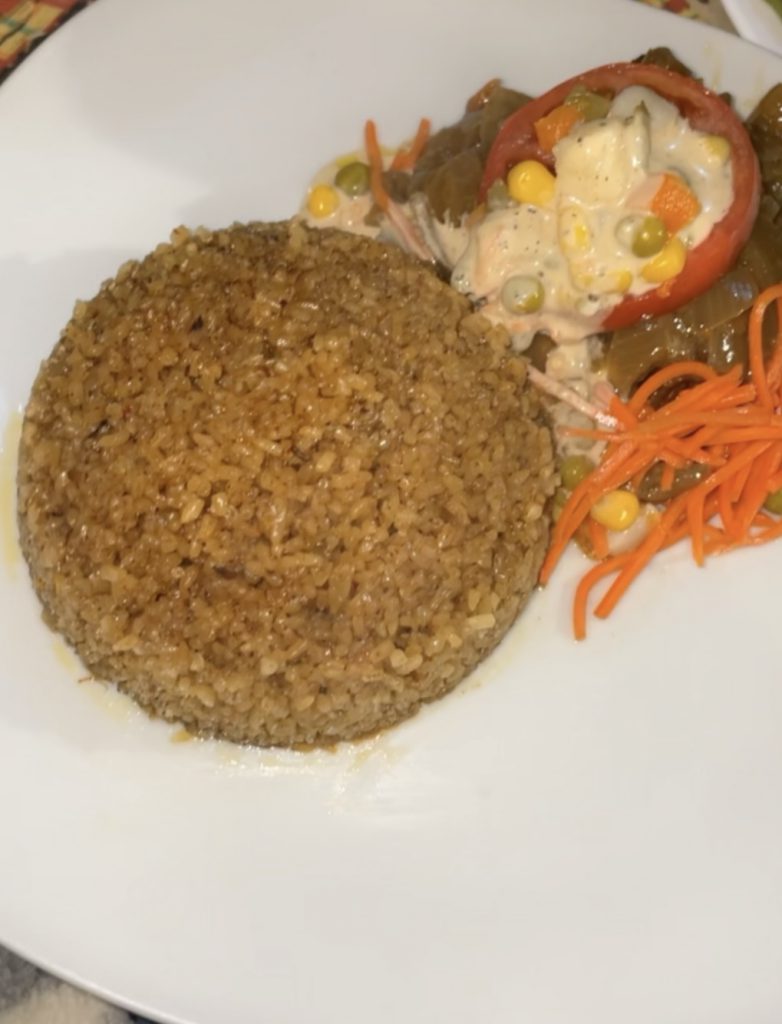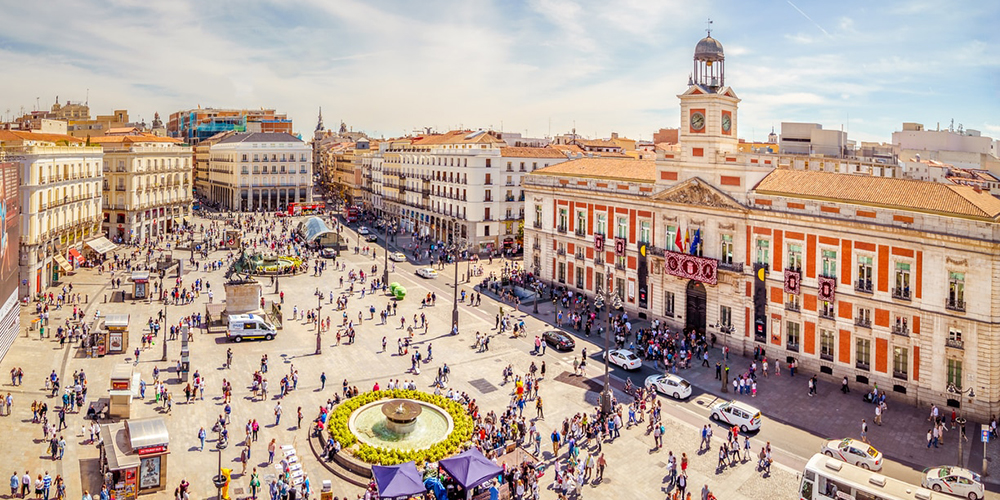Tour of Las Ventas
The Las Ventas tour initially began with our very friendly and informative tour guide, Raul, once we arrived to Sevilla. Prior to entering the arena, Raul gave us some insight and the historical context of bullfighting. According to the Gran corrida de inauguration photo, Raul taught us what the three main depictions of the photo represented. The flag was of the second republic at the time, and the wording in the photo also describes the charity-driven environment of the bullfights (money given to those who built it). Below the words are a representation of the 8 fighters to 8 bulls. We learned that “Manolete”, Manuel Rodriguez, is considered the best bullfighter of all time in Spain. The tour guide also emphasized the bullfighters’ ego, in that their reputations pay off more than money. When they win, they either cut off an ear or tail, and the public honors them by clapping and cheering.
Las Ventas Entrance

Once we entered the arena, were able to observe the multicultural art displayed on the arena that involved both Muslim and catholic attributes.
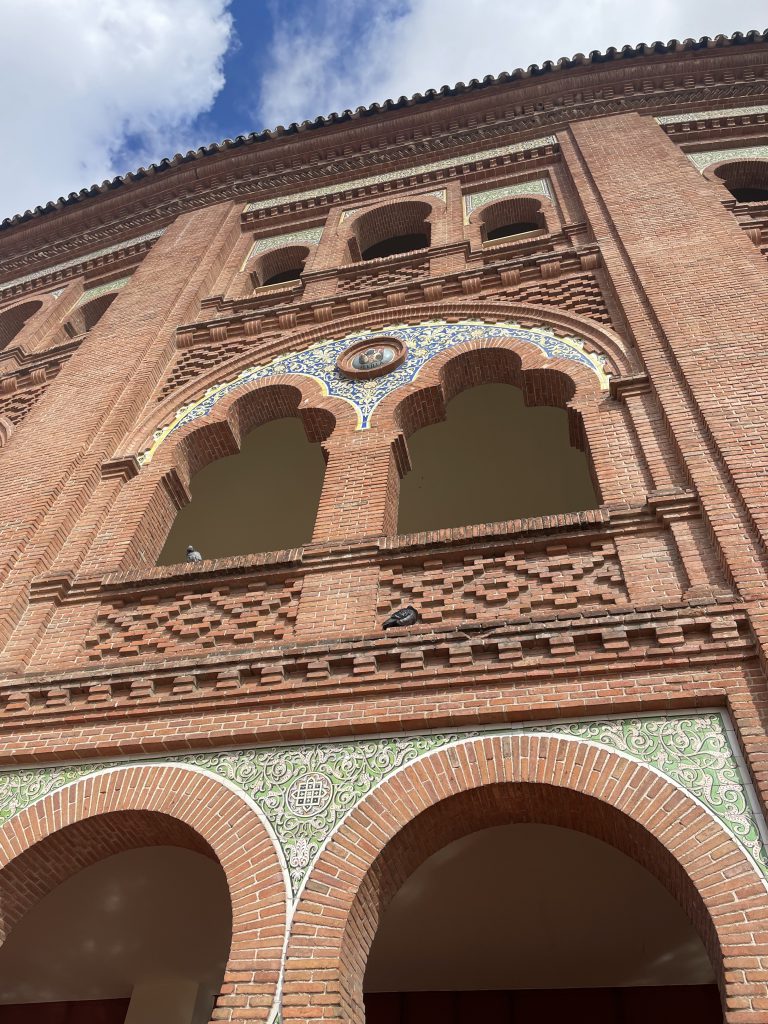
The timeline of the bulls prior to the fight to their deaths following the fights was also discussed. The tour guide described the fact that bulls went through a set of conditions prior to the bullfights. They were considered expensive to breed and were sometimes covered to protect their horns from blinding one another prior to the fights. Small and thin swords were used as an advantage over the bulls to reach their hearts and kill them. Many details played along during the fight that the tour guide also mentioned. Raul stated how weaker bulls were drawn from the competition and were viewed as not good enough. Following the death of the bull, meats are sold (were sold more commonly back then as well) and some were given to bullfighting schools for training purposes. Below is a photo of a bullfighter being attacked by a bull.
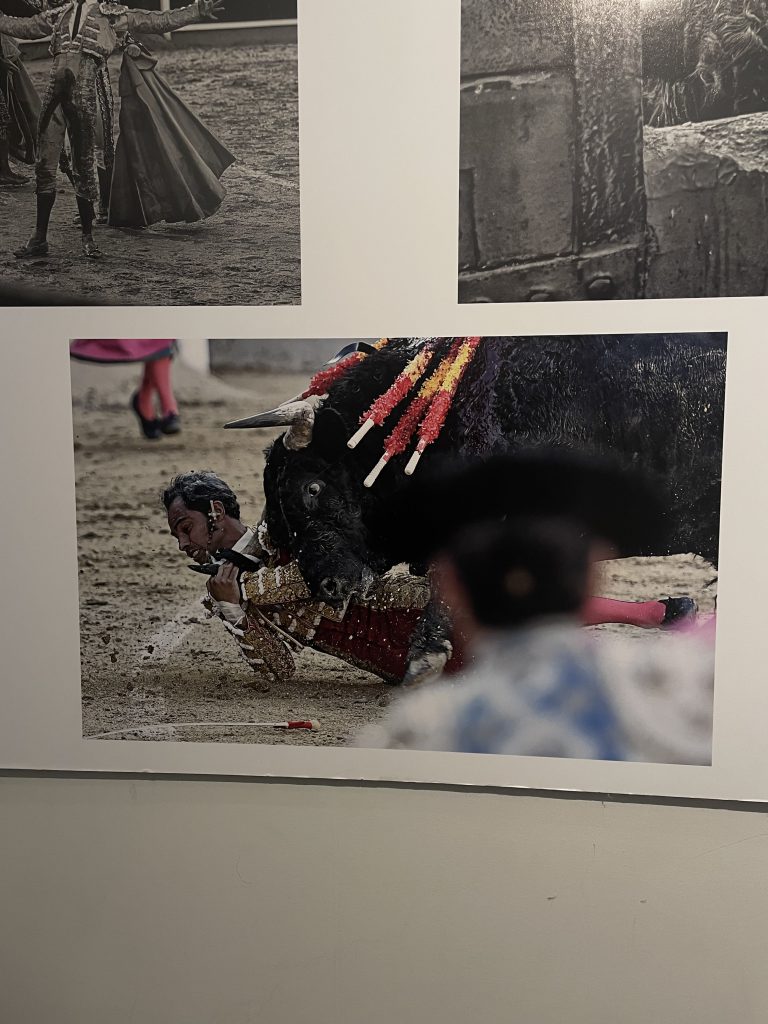
Another key historical figure we highlighted during the bullfighting tour was Juanita Cruz, the goddess of bullfighting. She was one of the first women to advocate for female involvement in bullfighting and designed her own outfit for it as well. I personally find this very inspiring as I am a feminist myself and see the importance of women involvement in traditional men activities. With Juanita’s reform, many women were able to bullfight along the way. Overall, Spain has a division between those who support bullfights and view it as traditional to the country while others are very progressive in regards to animal rights laws.
Lunch at El Corte Ingles
After the tour, we headed to El Corte de Ingles where we had lunch at the rooftop cafe. There, I had a slice of mediterranean flatbread and thai rice with a gorgeous view of Madrid. It was pretty windy but that didn’t stop us!
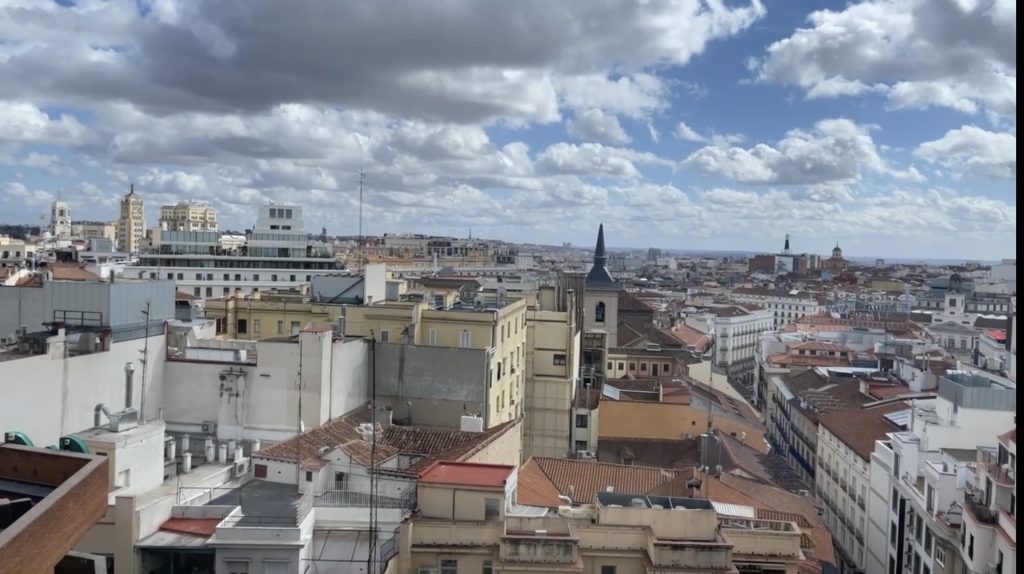
James Blick Discussion
Following the tour, we were able to meet one of Spanish’s journalist, James Blick, who touched upon his college experience in New Zealand, as he graduated with a degree in law, and shared pieces of evidence for us as undergraduate students. He explained that his career choice wasn’t a right fit for him and shared his personal experience with his decisions. Overall, he gave our group helpful insight about our lives and emphasized the importance of being open to pursuing different paths and finding your true passion.
Visiting the Reina Sofia Museum
After some downtime following the James Blick conversation, we visited the Reina Sofia Museum. This museum consisted of mainly contemporary art pieces and 3 functioning floors to look through. I personally wasn’t as favorable of this museum but kept an open mind to different forms of art.
Reina Sofia Sign
African Dinner at Lavapies
Following the museum, we toured Lavapies where we found a Senegalese restaurant known as “Africa Fusion ” where we had dinner. I had a yummy plate of jollof rice, beef, and vegetables and had a pleasant experience with the owner.
